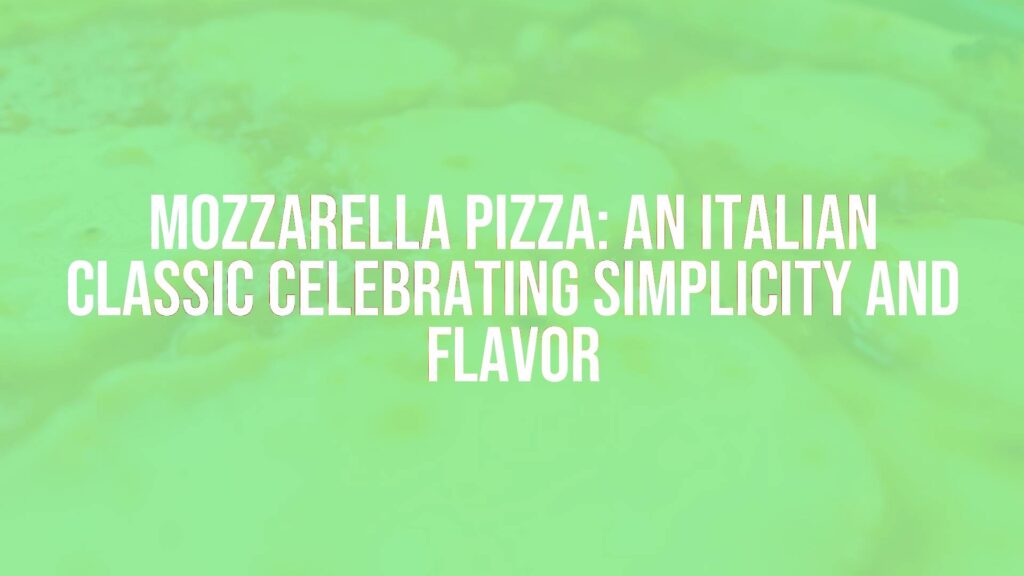The Essential Qualities of Mozzarella Pizza
Mozzarella pizza holds a beloved spot at the heart of Italian gastronomy, renowned worldwide for its harmonious balance of flavors and inviting aroma. Distinguished by its generous layer of melted mozzarella cheese, this style of pizza features a thin, crisp crust and a vibrant tomato sauce base, creating an irresistible combination of chewy, gooey, and savory components. The trademark bubbles and stretch of mozzarella as you pull away a slice are visual indicators of quality, while the interplay of creamy cheese and tangy tomato captures the essence of Italian comfort food.
Historical Background and Italian Roots
The history of mozzarella pizza is closely intertwined with the culinary traditions of Naples, where pizza as we know it today emerged in the 18th and 19th centuries. The iconic Margherita pizza—often cited as the original mozzarella pizza—was created in honor of Queen Margherita of Savoy, featuring the colors of the Italian flag: red (tomato), white (mozzarella), and green (basil). Since then, mozzarella pizza has become a defining symbol of Italian cuisine, cherished across regions and reinvented in countless variations.
Key Ingredients Defining the Dish
The defining element of mozzarella pizza is, unsurprisingly, mozzarella cheese. Traditionally, fresh mozzarella di bufala (made from the milk of water buffalo) or fior di latte (from cow’s milk) are preferred for their superior melting qualities, delicate flavor, and moist texture. Alongside mozzarella, classic pizza dough—made with wheat flour, water, yeast, and salt—and a bright, uncooked tomato sauce are fundamental. Olive oil, often drizzled both before and after baking, enhances the richness of the cheese and crust, while a few fresh basil leaves contribute aromatic freshness.
Popular Variations and Ingredient Substitutes
While the purest form of mozzarella pizza is straightforward, variations abound throughout Italy and beyond. Some pizzas incorporate additional cheeses, such as provolone or Parmigiano-Reggiano, for added depth. Toppings like roasted vegetables, cured meats, or mushrooms are sometimes layered on, but mozzarella always remains the star. For dietary needs or different flavor profiles, plant-based mozzarella alternatives can be used, and some recipes call for partially dried mozzarella to prevent excessive moisture on the crust.
Serving Styles, Pairings, and Enjoyment
Mozzarella pizza is traditionally served hot from a wood-fired oven, sliced in wedges and eaten by hand or with knife and fork. It pairs beautifully with light red wines—such as Chianti or Lambrusco—or a crisp Italian lager. For a more rounded meal, it can be enjoyed alongside verdant salads or a plate of antipasti. Whether enjoyed at an Italian pizzeria or crafted at home, mozzarella pizza’s approachable yet profound flavors make it a perennial favorite with diners of all ages.
Enduring Appeal
Mozzarella pizza’s enduring popularity lies in its focus on high-quality, fresh ingredients and a refusal to overcomplicate. It is both a blank canvas for culinary creativity and a shining example of Italy’s dedication to food that is greater than the sum of its parts.

